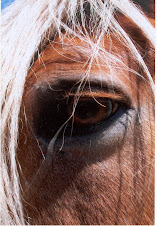“I am learning that everything is perfect and to not be a perfectionist.” — From “Wokini” by Billy Mills
These words about perfectionism are good to remember when learning new things. On Saturday, I was at Pine Needles Yarn Shop in Cable for a Navaho Tapestry Weaving course taught by Laura Berlager.
Berlager began learning the method in 1998, when she was 13 years old. She is currently attending Goddard College in Vermont pursuing a masters in fine arts in interdisciplinary arts.
Our class began with receiving our portable looms, along with a shed stick and beater. Berlager made the looms and shed sticks and had a local craftsman make beautiful handcrafted beaters for each student.
Though I already own five different looms, I was happy to receive a new one for this new endeavor.
Next, we chose two colors of wool, one light and one dark, as well as a contrasting yarn for our edge work. I found a beautiful gold wool as my light yarn. I held it up to the other colors to find a dark yarn and my eye was drawn to a dark green. When I held the two together, I realized my woven project would resemble a Green Bay Packer’s theme. I let the gold go and substituted a lovely off-white heather. (Don’t get me wrong, I always cheer for the Packers, I just didn’t want to weave a jersey.)
We warped our looms with a continuous strand of cotton, chosen for its strength and ease of use. The sampler pattern began with an inch of plain weave, over and under. Berlager taught us how to incorporate the edge work twill into our woven edges. This process developed the first inch of our pattern.
I learned Navajo weaving is a long process. Each row needs to be tight so the warp yarn does not show through. This is where our beaters come in. Each woven row was beaten down with our lovely tool.
“Don’t be afraid to beat it like you mean it,” said Berlager. “Let it know who’s boss.”
We beat our yarns, not to be violent or cruel to them, but to create the proper tension.
“A loose weave will cause trouble as you get farther into your pattern,” said Berlager.
One woman lamented that she had made a mistake in her weaving.
“The Navajo have a story about that,” said Berlager, who is an accomplished story-teller as well as weaver.
“Spirit woman taught the Navajo people to weave,” she began. “One woman spent all the time she could at her loom and she was a perfectionist. She was about to finish the most perfect weaving she had made when she suddenly disappeared. The other women looked for her and could not find her. They called Spider Woman to help them find her. Spider Woman looked at the weaving, examining it closely, and pulled one strand out. The lady re-appeared.
“Let this be a lesson to all of you, she said. You must leave a doorway open in your weaving or you will weave your soul into your weaving. If you have a mistake here or there, don’t worry, you won’t get woven into your weaving.”
One in our group added, “I heard that the Amish have something similar. They always leave at least one mistake in their crafting because they say only God can be perfect.”
Whether you remember the Amish tradition or the Navajo legend, learning to not be a perfectionist, and being able to see the perfection of all things, is a good lesson. Having the patience to take your time and create a thing of beauty is a virtue. Causing stress to enter your life by demanding that it be perfect can take away the happiness generated from the creative process.
I’ve done a lot of knitting, weaving, and other fiber arts, and I’ve learned that a mistake can often lead to a new pattern, or an original design element in my work.
During our class, we talked about the many different reasons why people weave. Some weave to get the job done. Some weave because they like to socialize with other weavers. Some weavers may work on a project for five years or more, before completing it. Some may never complete their project. It doesn’t matter.
All are perfect, and each project is perfect, not because the result is perfect, but because of the lessons we learn and enjoyment we get from the process.
Winter is a good time for contemplative fiber work. The new exhibit at the Washburn Cultural Center is textile and fiber arts. I have several pieces in the exhibit including weaving, felting, knitting, spinning and quilting. Feel free to see if you can find the ‘doorway’ in any of my work.
May we all see the perfection of our lives.
Subscribe to:
Post Comments (Atom)





No comments:
Post a Comment